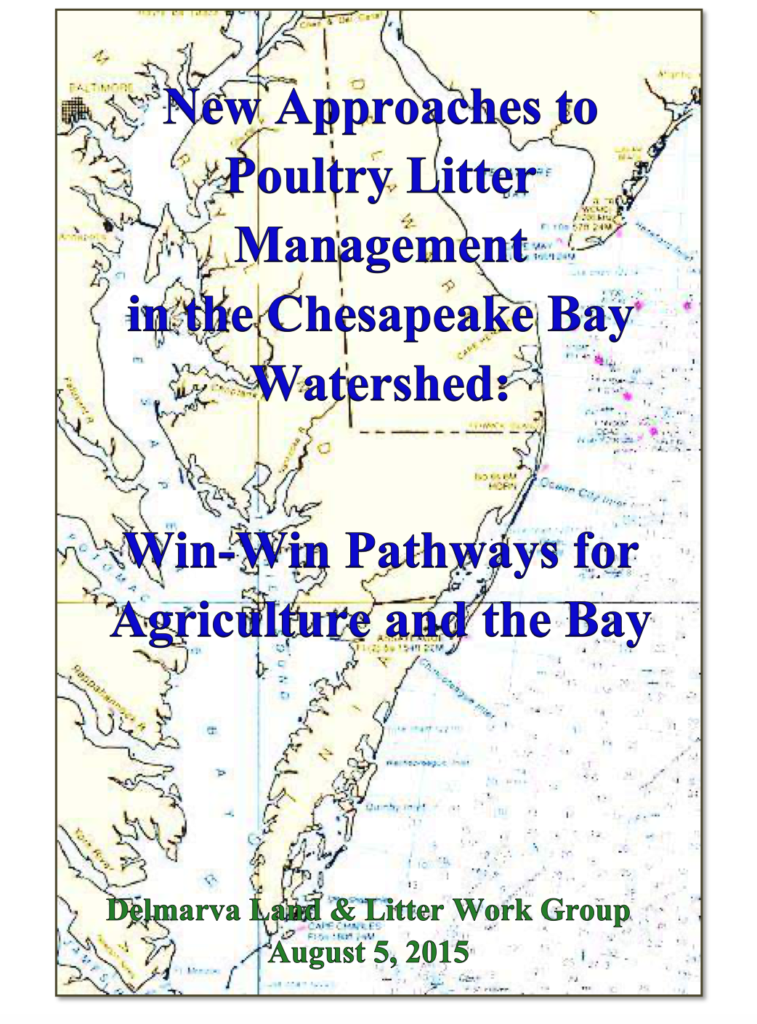Our Work
The greatest value DLLC offers is the collaborative work that is done to build trust and share knowledge among its members. Our members, in turn, bring a broader perspective to their organization’s work. Because of the consensus-building nature of DLLC, it takes time and commitment to develop materials, products and letters that everyone can agree to. The value of this to stakeholders is that you know a very diverse group of people have vetted and agreed upon the work that is released in DLLC’s name.
DLLC members come together in Workgroups to research issues, educate members and develop products to inform the public. Past Workgroups included Litter Transport, Mass Balance and State of the Delmarva Chicken Industry. Current workgroups are Innovative Solutions, Policy, and Ammonia Dynamics.

DLLC 2020 Year In Review
The COVID-19 pandemic forced us all to change behaviors, move to virtual platforms, and realize how interconnected we all are. It also underscored the importance of continuing to convene the Delmarva Land and Litter Collaborative (DLLC), a forum for diverse partners who work together to identify solutions in support of healthy ecosystems, farming, and chicken production on the Delmarva Peninsula. Through our work, we recognize the distinct character of this region and our collective need for clean water.

Litter Matching Service
The DLLC Policy Workgroup met in December, 2019 and discussed the potential delay of the Maryland PMT. During that meeting, the group determined that DLLC had enough knowledge to support the full implementation of the PMT and make tangible recommendations to MDA. A month later, the workgroup developed the DLLC PMT Recommendations to MDA. During that meeting, DLLC identified the need for a litter matching service to connect growers with haulers and producers and determined that DLLC partners were in a great position to obtain NFWF funding and develop the application for the Delmarva region. Their research led to the NFWF Project Spotlight:Manure/Litter Matching Services webinar (facilitated by DLLC). DLLC members worked closely with Delmarva Chicken Association to write the NFWF proposal. To be prepared with an app design when the NFWF funding became available, The Campbell Foundation provided funding for the stakeholder research and app design.

DLLC 2020 PMT Recommendations to MDA
DLLC recognizes the hard work that it takes to implement the Maryland PMT while providing support to farmers. Our members offered the following five consensus supported recommendations in 2020 that we believe are complementary of MDA’s efforts. One recommendation was to ask MDA to support the development of a private online litter marketplace. DLLC and its partners are in a unique position to develop and manage a private, online regional litter market service for growers, haulers, and receivers. The outcome of this concept was the littr. app described above.

Exploring Chicken Farming on Delmarva storyboard
Exploring Chicken Farming on Delmarva was a DLLC effort to gather data that all could agree on to describe farming on Delmarva between 1985 and 2017. Data processing and mapping was conducted by Eastern Shore Regional GIS Cooperative with intense participation by a workgroup of DLLC members. The storyboard was not released until DLLC had 100% support from each member.

DLLC 2019 Year In Review
2019 was another busy year for the Delmarva Land and Litter Collaborative (DLLC), a forum for diverse partners who work together to address challenges and identify solutions around chicken litter management on the Delmarva Peninsula. DLLC supports solutions that improve the productivity of agricultural lands and protect water quality in our local waterways and the Chesapeake Bay.

Mass Balance Methods for Delmarva
The study was conducted through a collaborative process where researchers and stakeholders worked together to develop the methods, decide on assumptions, review the data, and write the report. The workgroup of seventeen people, representing environmental and agriculture interests, was led by three co-chairs also representing both interests. The data analysis team was composed of members of the Maryland Department of Agriculture, Delaware Department of Agriculture and the University of Delaware. The DLLC decided in advance to only release the results of this study if the full DLLC Steering Committee could reach a consensus in support of the final product.Ultimately, the workgroup could not find consensus on three of the assumptions and the DLLC Steering Committee made the decision to not release a report. In lieu of a final report with results and data this report provides the background material, methods, assumptions, data sources and a brief discussion of the unresolved issues.

Letter to the Maryland Bay Cabinet 2018
This letter was sent by DLLC members in 2018 in support of more transparency and communication between MDA and MDE to better understand where litter was being transported and applied, to fund staffing for the Maryland Soil Conservation Districts and to improve the transport program.

DLLC Recommendations for Model Poultry Litter Transportation Program Attributes, released April 2017
Through a prolonged and thoughtful dialogue involving grain and poultry producers, environmental advocates and state government agency representatives; the DLLC Steering Committee reached consensus that adjustments needed to be made to existing manure/litter transport programs in order to better facilitate the relocation of poultry litter without causing environmental degradation. Many of these recommendations are still relevant five years later.

New Approaches to Poultry Litter Management in the Chesapeake Bay Watershed: Win-Win Pathways for Agriculture and the Bay (DLLC 2015 Report)
Through the Delmarva Land and Litter Project, a “kitchen cabinet” Work Group composed of a diverse cross section of grain growers, poultry producers and integrators, academic experts, extension agents, along with conservation and business partners, came together to assess progress in managing nutrient pollution associated with the storage, transport and land application of poultry litter on the Delmarva Peninsula. One of the recommendations of this group was to form a diverse, collaborative stakeholder group, which became DLLC.


